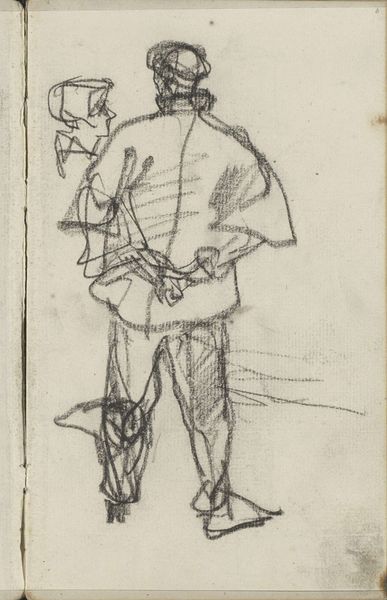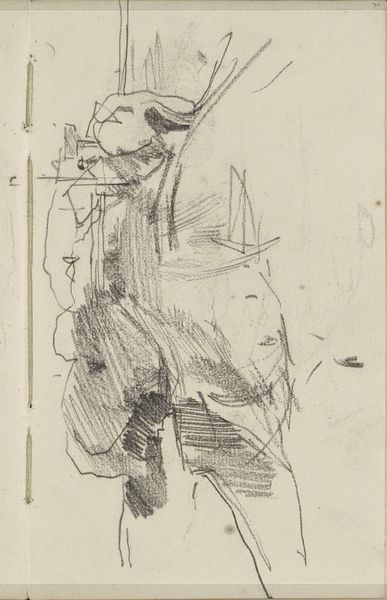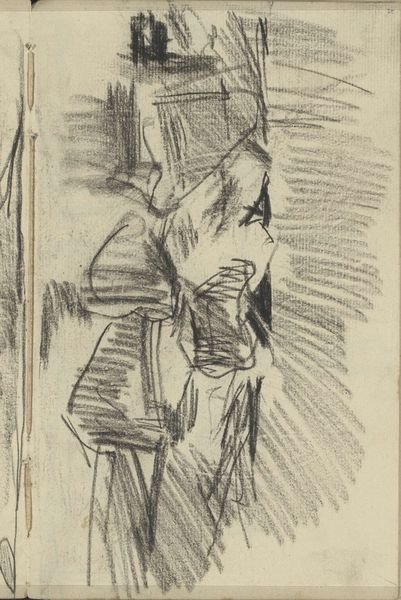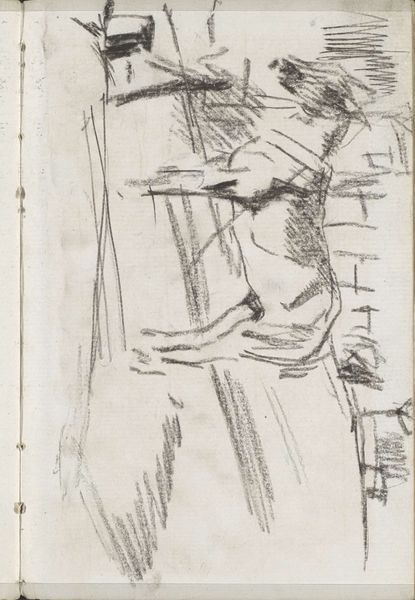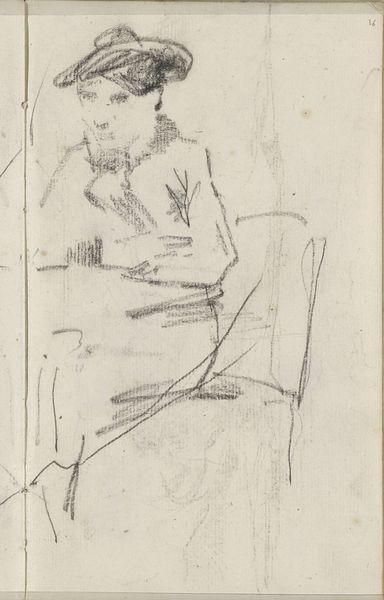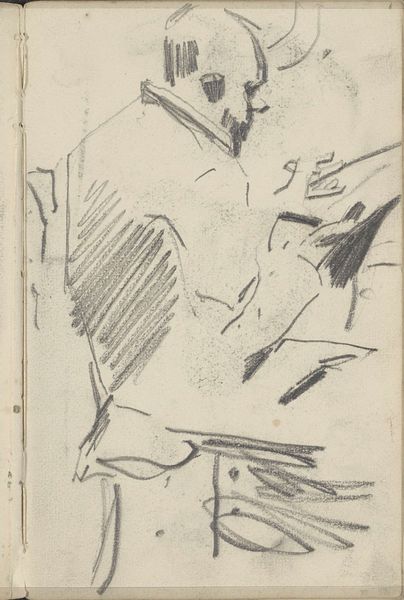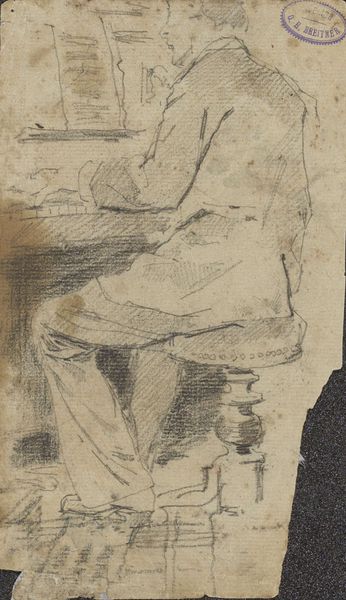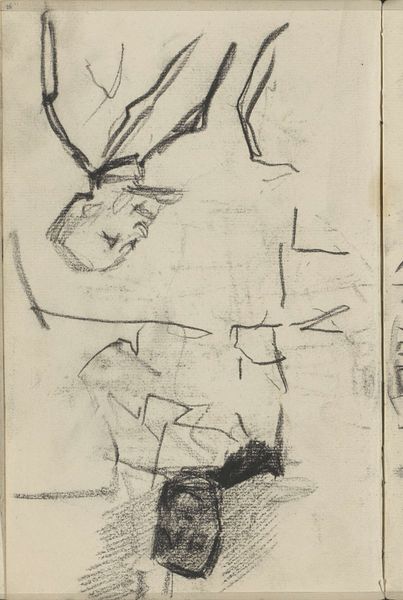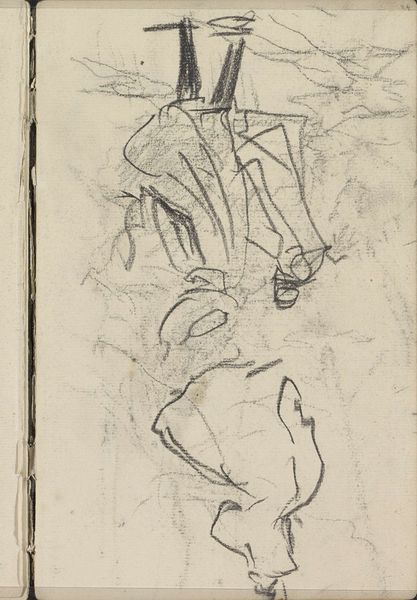
drawing, pencil
#
drawing
#
amateur sketch
#
light pencil work
#
impressionism
#
pencil sketch
#
sketch book
#
incomplete sketchy
#
personal sketchbook
#
pen-ink sketch
#
pencil
#
sketchbook drawing
#
sketchbook art
#
realism
#
initial sketch
Copyright: Rijks Museum: Open Domain
Curator: Here we have George Hendrik Breitner’s "Zittende man," or "Seated Man," dating from 1884 to 1886. It’s a pencil drawing currently held in the Rijksmuseum collection. Editor: The immediacy of it strikes me. There's a raw, almost restless energy in the lines. It feels very much like a fleeting observation captured in the moment. Curator: Indeed, and that's characteristic of Breitner's process. He was deeply engaged with portraying the realities of urban life, particularly in Amsterdam. These sketchbooks became crucial tools. Consider the accessibility of the medium, just pencil on paper allowing quick, unpretentious studies. It sidesteps the conventions associated with formal portraiture, doesn’t it? Editor: Absolutely. Think about the role of the sketchbook itself—a private space for exploration versus a public-facing work. It's interesting how the museum display elevates something inherently intimate. This raises questions about authenticity and the market. Is the value tied to its art historical significance or the tangible sense of the artist's hand? Curator: Well, viewing the image through the lens of its social context, we see Breitner seeking truth in everyday life and resisting idealized or romanticized visions of people. This stance reflected broader cultural shifts away from academic traditions. Breitner found something of interest in this sitter; this sketch wasn't commissioned, he felt some compelling need to create it. Editor: The sketchy, unfinished quality adds to that sense of realism. We aren’t presented with a polished product, but rather the bare bones of the subject. The very materiality—the graphite left on the paper and its potential erasure—mirrors the transient nature of the human figure and the urban experience that captivated Breitner. Curator: And placing this work within the Rijksmuseum, an institution charged with constructing a narrative of Dutch art history, influences our understanding. It underscores the importance of sketches and studies. By including this type of piece, it broadens perspectives on artistry itself. Editor: It truly complicates traditional notions of value and challenges hierarchical perceptions of what constitutes art. It highlights labor, observation, and, essentially, Breitner’s working method itself as a critical part of his practice. This challenges the art market’s constant thirst for 'the finished product' and shines the spotlight on the process. Curator: Exactly, seeing "Zittende man" presented in this manner forces us to question the mechanisms of canonization and the political implications embedded in what is deemed worthy of preservation. Editor: I agree. The seemingly simple sketch contains such profound insights into art, process, and institutional value.
Comments
No comments
Be the first to comment and join the conversation on the ultimate creative platform.
